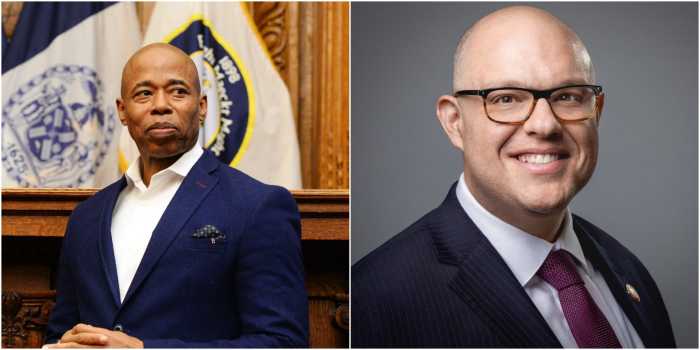From the very beginning of the pandemic-induced financial crisis, calls came flooding into our offices every day, all saying the same thing:
“I lost my job.”
“I haven’t gotten my unemployment check yet.”
And then: “I can’t pay rent this month.” “How am I going to pay my mortgage?”
Oftentimes this was said with frustration and even shame. People who had never missed a rent or mortgage payment were suddenly thrust into housing insecurity.
A few months later, there were new calls: “I have tenants who lost their job and haven’t paid rent for a few months. How can I pay the property tax bill due this month?”
We live in an incredibly fragile housing ecosystem — one which depends on a symbiotic relationship between tenant and owner to keep the system balanced and where far too many people are a few missed payments away from housing insecurity. This is true whether you are a tenant paying nearly fifty-percent of your income on housing, a homeowner renting out a second floor to help pay the mortgage, or a building owner who relies on rent to pay the city’s exorbitant property taxes.
As the pandemic wears on, more and more people are unable to pay their rent or their mortgage, and the distress on the housing ecosystem continues to grow and teeters ever more on the precipice of collapse. An estimated 735,000 New York City renter households have at least one member who lost their job due to the COVID pandemic. There are approximately 800k to 1.2m households across New York State who are unable to pay their rent, with an estimated $2.7 billion in back rent owed from March 2020 through January 2021.
In the absence of any meaningful relief from the federal government over the last nine months, we’ve been left trying to hold the system in place with stopgap measures, executive orders, and a lot of good will. Tenants and landlords trying to work out alternative arrangements to help pay a little rent at a time; enactment of the Emergency Rental Relief Assistance Act and the Tenant Safe Harbor Act by the state legislature over the summer to help keep people in their homes; and a patchwork of moratoria on evictions extended month-by-month to keep people out of housing court..
These measures, while helpful, did not provide the durable stability that our housing ecosystem needs to keep people safe during this crisis.
That is why earlier this month the legislature passed the COVID-19 Emergency Eviction and Foreclosure Prevention Act, a bill to prevent New Yorkers struggling due to the pandemic from losing the roof over their heads. This is a necessary action to prevent a disastrous wave of evictions and foreclosures.
This legislation, the strongest in the nation, prevents evictions and foreclosures/tax lien sales until May 1, 2021 (including for small property owners) by allowing tenants and homeowners to file a standardized hardship declaration form that attests, under penalty of law, that they can’t pay their rent or mortgage because they lost income due to the pandemic. It also implements a total moratorium on evictions and foreclosures for two months so New Yorkers have time to file. The bill also prohibits negative credit reporting against homeowners for using the law’s protections, and automatically renews senior citizens’ and disabled New Yorkers’ homeowner exemptions.
Crucially, this legislation is only the first step needed to nurse our housing system back to health. By preventing waves evictions or foreclosures, we can now turn our focus to help New Yorkers in housing distress have a path back from the brink. This means finding a way to help those who have declared a financial hardship to pay back rent, ensuring they get back on the path of housing stability.
But the truth is, we will need more help from the federal government to get through this and make everyone whole. Last week, the President finally signed a $908 billion stimulus package that extended unemployment benefits and provided $1.3 billion for New York State for rental assistance. This, combined with $100 million of funding from the CARES Act which seeded the Emergency Rental Relief Assistance, will go a long way to helping pay down the nearly $2.7 billion in back rent owed across the state.
But not everyone can access unemployment benefits or qualify for the first round of rental assistance. Even with expanded eligibility, excluded workers include immigrants without documentation who worked long hours at a job in the hard-hit restaurant industry, in social services or in cleaning services, or individuals who may have earned above the rental assistance income threshold before the pandemic hit.
Without decisive action by the next Congress and President, hundreds of thousands of New Yorkers could lose their homes — deepening the twin crises of poverty and homelessness, and plunging our city’s recovery into doubt. The city and state only do so much to ensure that tenants and small landlords can remain in their homes and get back on their feet. If we are to lay the groundwork for a sustained, humane recovery for our city, we need our federal government to answer the call.
If this pandemic has taught us anything, it’s that we are really each other’s keepers. We all cohabitate in a fragile ecosystem that depends on each of us to do our part to help each other. When you wear a mask and keep social distance, you keep others around you safe from harm, just as one person’s missed rental payment is another person’s missed mortgage payment or late property tax payment.
We are all in this together, and only by protecting New Yorkers from eviction or foreclosure can we can start to help rebuild our city, the home that we all share.
State Senator Andrew Gounardes and City Councilman Justin Brannan serve the neighborhoods of Bay Ridge, Dyker Heights, and Bath Beach, among others in southern Brooklyn.

























